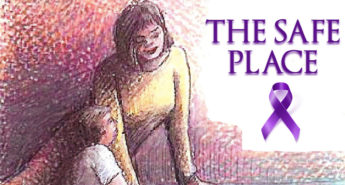 In the United States corporal punishment (the use of physical pain as punishment (such as spanking or smacking/popping) is very common. Although corporal punishment and its results are immediate it could be causing more harm than good in the long run. Mediation and conflict resolution show promising results in promoting a child’s well-being.
In the United States corporal punishment (the use of physical pain as punishment (such as spanking or smacking/popping) is very common. Although corporal punishment and its results are immediate it could be causing more harm than good in the long run. Mediation and conflict resolution show promising results in promoting a child’s well-being.
About 60% of parents in the United States use corporal punishment as their main punishment type. This includes any type of action whose purpose is to cause physical pain to make the child change their behavior. Although this form of punishment is very quick and easy to use there may be unintended consequences. The use of this type of punishment is associated with increased aggression, anti-social behavioral problems, and depression in children which may carry into adulthood. To make things worse, aggressive behavior is most often punished corporally further increasing the likelihood that aggressive behavior will continue. Every person is different and not everyone is affected the same way by corporal punishment. Some people are spanked and say they turn out okay, some say it was the worst part of their childhood.
There is an alternative to corporal punishment, but it requires time and patience with the child. First, it is important for the child to clearly know what they are and are not allowed to do. When these rules are broken a predecided punishment should be used, such as time out, taking away something the child likes, giving the child extra chores, etc. It should be stated what rule the child broke and what the punishment will be. This gives the child expectations for what happens when their actions are not correct. Perhaps a conflict arises between two children or the parent and child, then mediation should be used. Mediation, or stopping a dispute in the middle to fix it using conflict resolution strategies, is so far shown to be better overall for the child’s well-being.
To do this you must:
- Stop the conflict as soon as it arises.
- Both parties must be willing to listen and understand what each other are saying.
- Take turns talking and do not interrupt each other.
- Break apart the problem so that you both fully understand it.
- Not assume the other person knows what you mean, spell it out for each other.
- Figure out a solution together.
- Rephrase what the problem was and how you came to a solution.
The purpose of solving conflicts in this way is to fully explore how both people feel about the situation and the best way to handle it. The next time a similar situation arises it will be much easier to handle for both the parent and the child. This will also give the child time to work through their own emotions. It will take longer to work to a solution using mediation and conflict management, however the results point to a mentally stronger and healthier child overall.
For more information on conflict management:
https://raisingchildren.net.au/grown-ups/looking-after-yourself/communication-conflict/conflict-management-for-parents
https://www.fatherly.com/love-money/conflict-resolution-strategies-parents
For more information or for help with domestic violence issues call 1-888-554-2501, anytime, day or night.
References
Burlaka, Viktor, et al. “The Role of Adverse Childhood Experiences and Corporal Punishment in Early Adulthood Depression and Substance Use among Ukrainian College Students.” Journal of Family Violence, vol. 35, no. 3, Apr. 2020, pp. 285–95.
Gebara, Carla Ferreira de Paula, et al. “Psychosocial Factors Associated with Mother–child Violence: A Household Survey.” Social Psychiatry and Psychiatric Epidemiology: The International Journal for Research in Social and Genetic Epidemiology and Mental Health Services, vol. 52, no. 1, Jan. 2017, pp. 77–86.
Gershoff, Elizabeth T., and Susan H. Bitensky. “The Case against Corporal Punishment of Children: Converging Evidence from Social Science Research and International Human Rights Law and Implications for US Public Policy.” Psychology, Public Policy, and Law, vol. 13, no. 4, Nov. 2007, pp. 231–72.




Leave a Reply